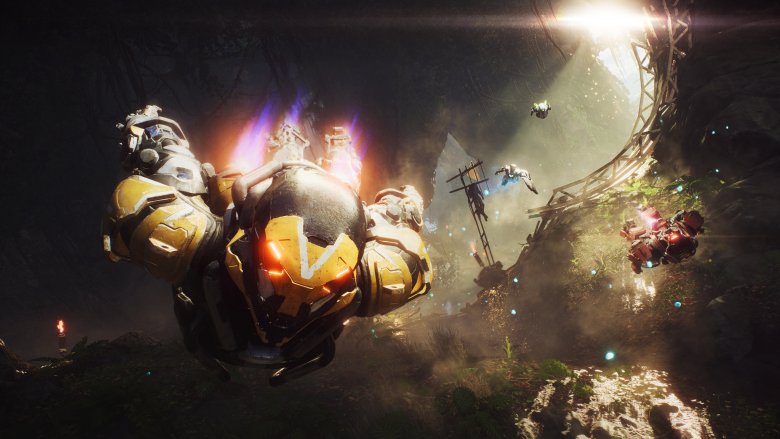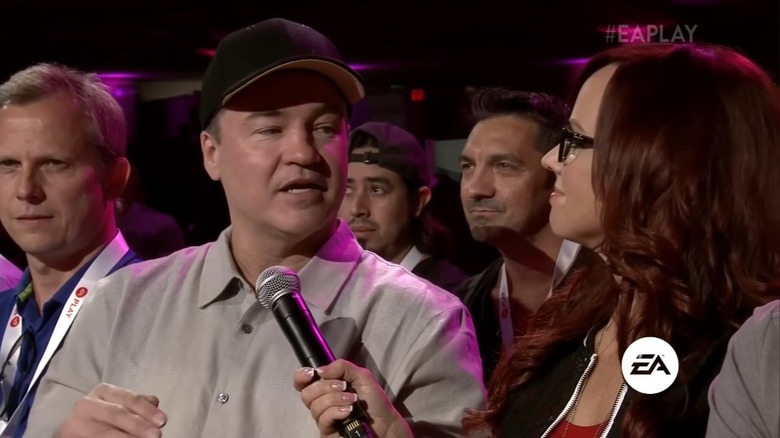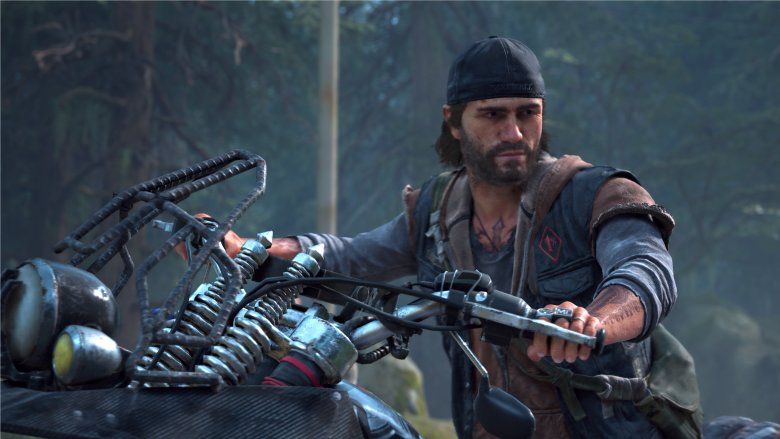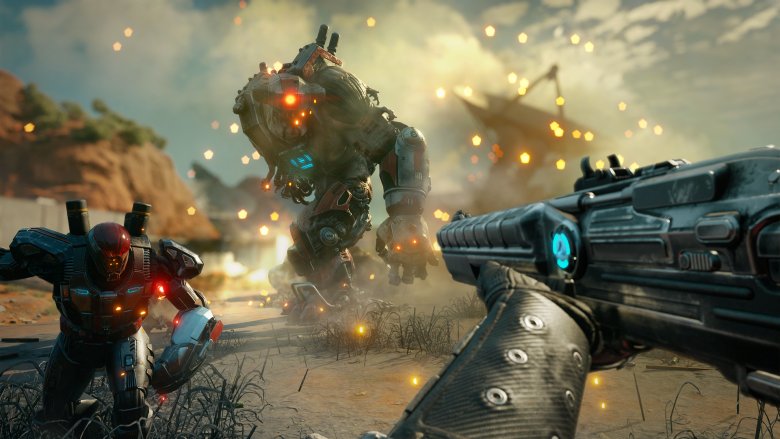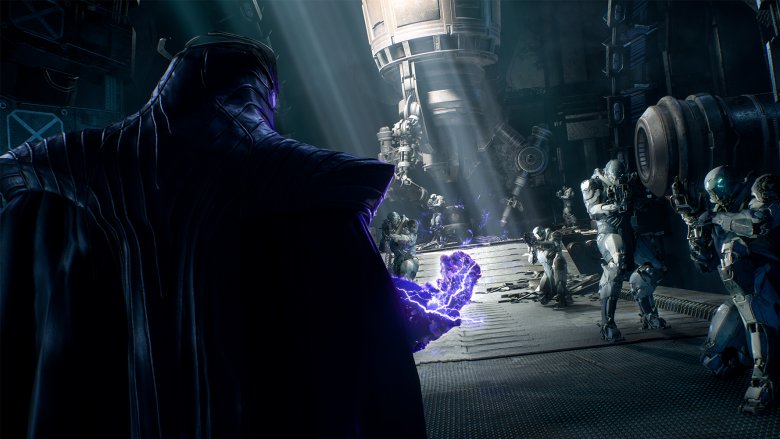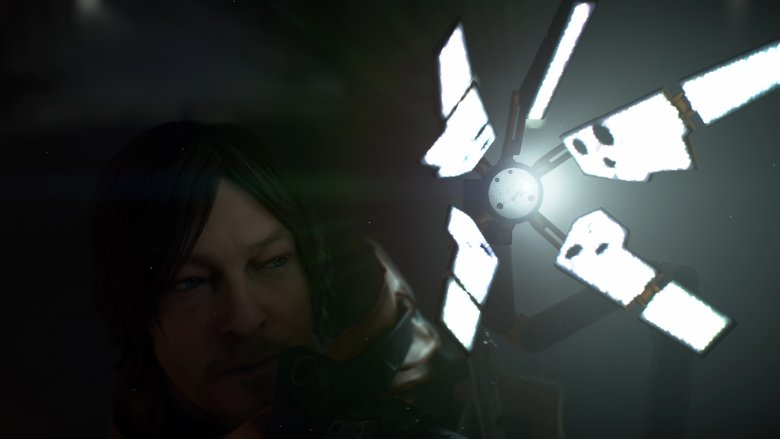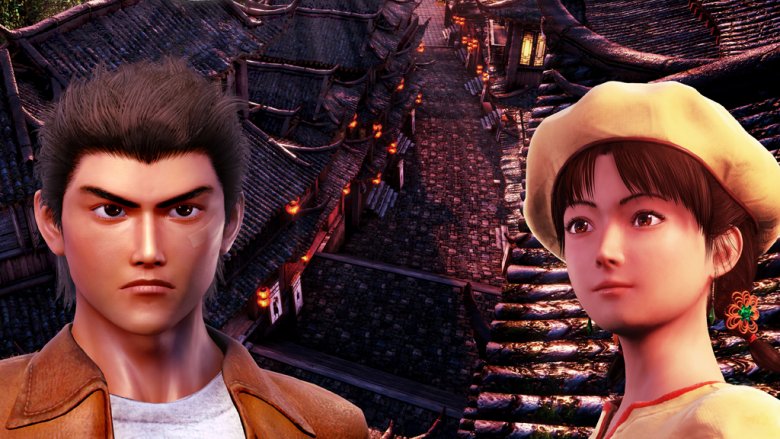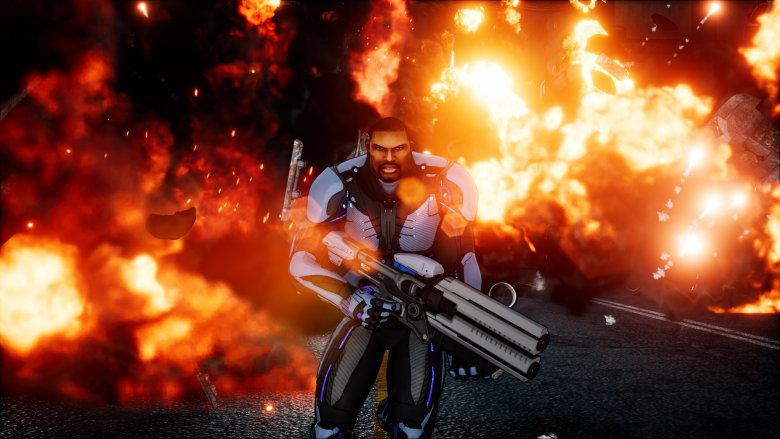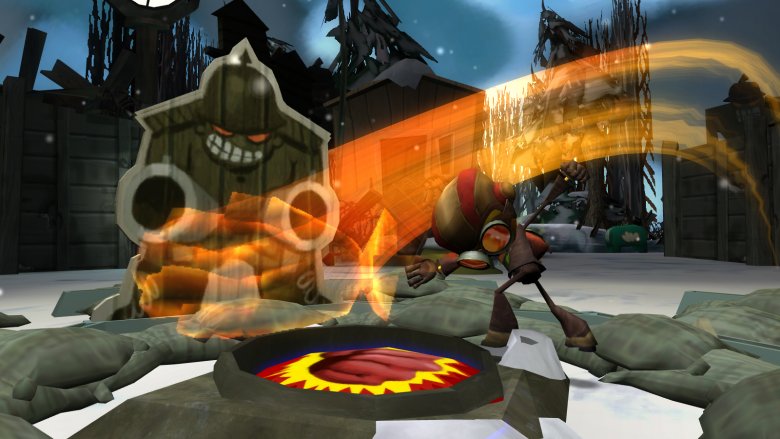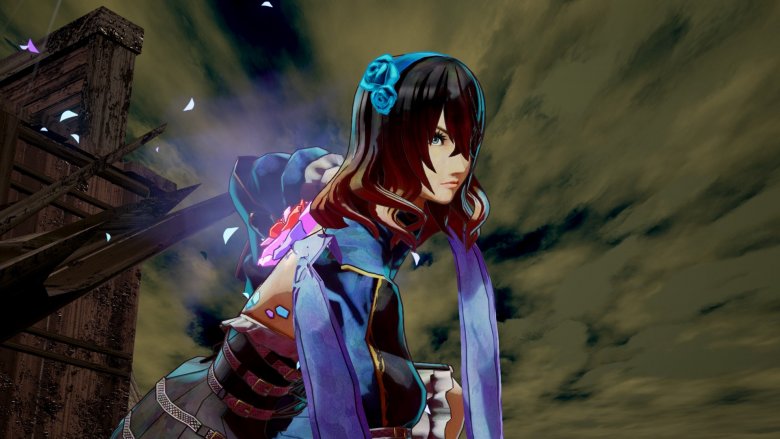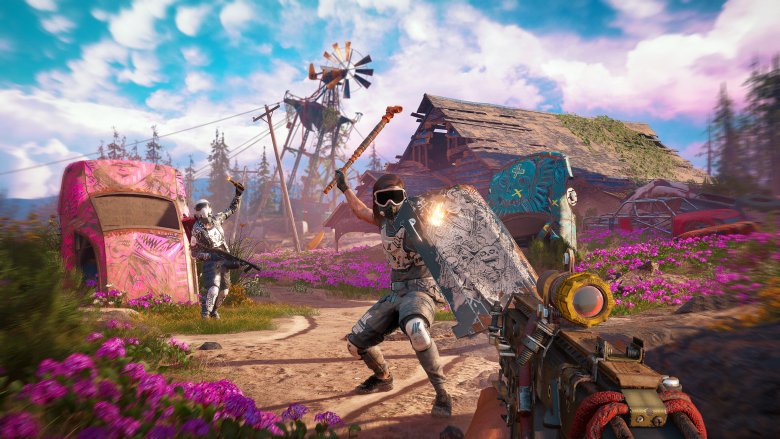2019 Games That Won't Live Up To The Hype
The games industry survives on marketing and hype. Without excited consumers, games can be doomed to the wayside, failing to meet sales expectations. However, some games receive too much hype, leading to disappointment upon release. Sometimes, a game just won't live up to its trailer, and other times, the expectations become so high that no amount of polish can live up to it.
Various factors can contribute to a game's hype. For example, sequels to critically acclaimed games are often in a tough place, need to live up to and surpass its predecessor. In other cases, the development studio's track record could set some lofty expectations in fans' heads. In general, good marketing determines the climate surrounding a game leading up to launch day. When all is said and done, however, what matters most is the quality of the final product.
To temper your expectations, we have gathered some games set for a 2019 release that might not meet your demands.
Star Wars: Jedi -- Fallen Order might be another EA disaster
For diehard Star Wars fans, EA dropped the ball with the license, particularly with the Battlefront games. The second one was so laden with microtransactions that countries started reconsidering their gambling laws. After two multiplayer shooters, EA finally revealed it plans on publishing a fully single-player Star Wars experience, but it probably won't live up to your expectations.
In an interview at E3 2018, Respawn Entertainment founder Vince Zampella announced Star Wars: Jedi — Fallen Order, a "dark" narrative-driven title. However, the game has yet to show off any assets, not even a measly screenshot, which makes us question the studio's confidence in its product. For a game set to release holiday 2019, there's a disturbing lack of any information surrounding this high-profile Star Wars release.
With Episode 9 slated for the end of the year, the marketing for anything related to Star Wars will be massive and pervasive, regardless of the product's quality. The Force Awakens and The Last Jedi were both accompanied with a Battlefront game. They received major marketing pushes to coincide with the movies, but both left fans disappointed. While we can't say the same thing will happen with Fallen Order, it's hard to deny that EA has set an unfavorable precedent with its Star Wars games.
Days Gone probably won't live up to Sony's standards
Sony has thrived on its reputation of publishing some of the best single-player experiences in the industry. Horizon: Zero Dawn, God of War, and Marvel's Spider-Man are just a few examples of the publisher's top-tier quality. At this point, Sony can't publish a bad game — at least, that's what it feels like. These games have been good for a long time, so why should Days Gone be any different?
Well, there are a lot of reasons. Consider Bend Studio's history before you expect anything out of Days Gone. The last two games they made were some forgettable Uncharted spin-off titles for the PlayStation Vita years ago, with a long line of Syphon Filter games preceding that. The studio doesn't have the résumé to live up to the lineup of Sony-published games. Beyond that, every trailer points to Days Gone being an open-world zombie survival shooter. How many games have ticked those checkboxes in the last decade?
The Oregon-based developer has some uncomfortably big shoes to fill with its newest game. Unfortunately, Days Gone risks being stale and generic at launch, and it has a high chance of breaking the streak of stellar PlayStation 4 exclusives.
Rage 2 is following a boring original game
Rage 2 made its official debut in May 2018, surprising the gaming community at large. Big guns, big cars, and big ego define this sequel's identity, per the bombastic trailer set to Andrew W.K.'s "Ready to Die." The game follows its predecessor Rage, a 2011 shooter that emphasized vehicular combat in a post-apocalyptic world. Considering id's track record with first-person shooters and Avalanche's work on the 2015 game Mad Max, the development team seems like a match made in heaven.
However, ask yourself, how many people were clamoring for a sequel to Rage? For the most part, the game was lost to the sands of time because of its bland gameplay and aggressively brown visuals. While Rage 2 learned its lesson in the visuals department, the gameplay still relies on the same shooting and driving mechanics that made the first game so forgettable. At its core, nothing significant has changed, and if that's the case, the outlook for the game looks bleak.
Publisher Bethesda Softworks is no stranger to good first-person shooters, considering it published id's own wildly successful Doom reboot in 2016. However, they might have it wrong with Rage 2, which has too much to prove. Unfortunately, based on the gameplay footage that has been released, Rage 2 looks fine but too easily comparable to its bland predecessor.
Anthem might just be a Destiny-clone
BioWare's reputation as a studio is riding on Anthem's success. After sinking one of their most beloved franchises with Mass Effect: Andromeda, the demand for a knockout title is through the roof. To raise the stakes even more, Anthem is a brand new IP, meaning it has to stand on its own merits, unable to rely on any built-in audience outside of BioWare loyalists. And don't have a heart attack, but their parent company has a history of shutting down its underperforming studios.
At the risk of being too cynical, it's hard to believe Anthem will be the breakout success BioWare needs. The studio has a celebrated reputation for developing slowly paced story-driven games. The iconic Baldur's Gate games came from BioWare, along with the high-fantasy tales of the Dragon Age series. The developer championed narrative design for more than two decades, not high-octane third-person online shooters with an emphasis on loot. Yet they're betting everything on exactly that.
Anthem looks like BioWare trying to chase a trend rather than treading new ground. Instead of rising above and forging its own identity, it'll be buried under comparisons to Bungie's Destiny. Considering one of BioWare's lead writers left for Bungie, it's no surprise that Destiny is inspiring Anthem on some level. Unfortunately, the game might be too derivative, and it will never step out of Destiny's shadow.
Death Stranding might not be so solid
Game director Hideo Kojima's reputation precedes him, and his work on the legendary Metal Gear franchise alone earns him praise. After his departure from Konami, Kojima started his own studio, and Kojima Productions' long-awaited debut is none other than Death Stranding. Based on his fame alone, the hype went through the roof.
Since its reveal in 2016, more trailers have dropped, but a majority of them featured obtuse, mysterious events without any explanation. We saw a fetus give us a thumbs up, and we didn't see invisible creatures suck people into black slime portals. It all reeks of going for style over substance, as is common in Kojima's work. For two years, no one even knew what the gameplay in Death Stranding would look like. But then, a trailer at E3 2018 finally revealed what we've all been waiting for: lots of tedious walking segments. Nearly half of the eight-minute trailer showcased the various locations Norman Reedus would trudge through, with the other half being even more perplexing cutscenes.
So far, Death Stranding survives by the rule of cool alone, but it doesn't have any exciting gameplay to back that up. Kojima's star power eclipses the project itself, bolstering the hype for the game to unimaginable heights. When the game finally launches, expect to barely sate your excitement with some ho-hum walking segments punctuated by inexplicable story beats.
Shenmue 3 is stuck in the past
The releases of the Shenmue games on the Sega Dreamcast stand as some of the most pivotal moments in gaming history. If you've played an open-world game since the year 2000, you've likely experienced the impact of Shenmue's "living" open world. NPCs kept routines, and certain objectives appeared during certain times of day. These mechanics sound commonplace today, but when Shenmue came out, they were revolutionary.
14 years later, developer Ys.net announced Shenmue 3. Frankly, after so long, the sequel has no chance of living up to the historical impact of its ancestors. Beyond that, Shenmue 3 is looking to cash in on that pedigree rather than build upon it. Game director Yu Suzuki claims that nostalgia is a central part of Shenmue 3's development, but perhaps he's taking that mantra too far.
For example, take a quick look at the trailers and you'll see some disappointingly stiff faces reminiscent of the Dreamcast era, which has already been chastised by critics and fans alike. The stiff faces likely are a part of that nostalgia, but it fails to show any innovation. This heavily implies that, in many ways, this game is stuck in the past. Rather than being a trailblazer like the previous two, which literally set precedents for an entire genre, Shenmue 3 looks to emulate exactly what predecessors have done. It feels almost like a cash grab taking advantage of the series' reputation.
Crackdown 3 has had a bumpy development cycle
Crackdown 3 has been on the Xbox One's table since E3 2014. Following up the critically acclaimed first game and middling sequel, this third entry features famous athlete-turned-actor Terry Crews. The franchise is known for its superhero-esque action and wanton destruction, and Crackdown 3 is tripling down on the explosions with its promise of fully destructible environments.
A 2015 demonstration showed off some precision demolition that seemed groundbreaking. However, despite how good the game looks in practice, the development cycle leaves a lot of unanswered questions on the table. The game was initially supposed to launch with the Xbox One X in 2017, but it got multiple delays, putting Crackdown 3 in a highly competitive February 2019 launch window.
While delays don't mean a game will be bad, a change in developers less than a year before release bodes poorly for the title. Reagent Games dropped the project in June 2018 after creative director Dave Jones mysteriously left the company. Fans often credit Jones as the reason for the first Crackdown's success, as his absence in Crackdown 2 led to a poorly received sequel. Now Sumo Digital has the Crackdown 3 baton, running it to the February finish line. Losing Jones was a harsh blow to the game, leaving a lot of unanswered questions surrounding its quality. If the man responsible for the first game's success bailed on the studio just seven months before release, then it's hard to imagine Crackdown 3 launching to rave reviews.
Psychonauts 2's hardes boss will be nostalgia
Psychonauts launched on Windows, Xbox, and PlayStation 2 in 2005, and despite the positive reviews from critics, the game commercially flopped. Years passed before it achieved the cult status it deserved. Meanwhile, fans waited and hoped for a sequel. Then lo and behold, at The Game Awards 2015, Psychonauts 2 was announced.
It's easy to understand the hype behind a sequel to Psychonauts. For one, it achieved the dream of any cult franchise: another shot at mainstream success. Perhaps more importantly, the first game ended with a cliffhanger. But that's where the problem lies. 14 years is a long time to wait for a sequel, and at this point, expectations are so high that no matter how the cliffhanger resolves, people will find a way to be disappointed.
With the passage of time, Psychonauts became old enough for people to feel nostalgic about it. That means fans will fondly look back on the first one with rose-tinted glasses, and a sequel will never compare. Psychonauts 2 really only exists because of rabid fan demand, and ironically, these fans will likely be the most critical of any flaws thanks to that nostalgia. In this case, hopes might be too high for Double Fine to deliver a satisfying product.
Bloodstained: Ritual of the Night could be the next Mighty No. 9
Castlevania has remained in the public eye since its debut on the NES. After Symphony of the Night launched on the PlayStation, producer Koji Igarashi's name became synonymous with the franchise. In 2014, he left Konami to pursue his own game, Bloodstained: Ritual of the Night. Bloodstained was pitched as a spiritual successor to Symphony, the beloved classic. Since the games industry is no stranger to crowdfunding, you can bet that Igarashi launched a Kickstarter, which raked in $5.5 million.
However, consider the last time a famed Japanese game developer turned to Kickstarter and made a game based on his famous works. Producer Keiji Inafune, known for his work on the classic Mega Man series, created his own spiritual successor, titled Mighty No. 9. The game flopped and was horribly received by fans and newcomers alike. By trying so hard to relive the past, the developers lost sight of what made those games fun in the first place.
Bloodstained may not suffer the same fate, but it clearly follows in the same footsteps. Igarashi strives to capture the same nostalgia Mighty No. 9 went for. He has pushed the game's launch back multiple times, spending more time than he anticipated in development. That extra production could be a sign of the developers tediously trying to recapture the past, all the while losing the vision of a true successor to Castlevania.
Far Cry: New Dawn
Have you played Far Cry 5? Well, if you played Far Cry 3, you've got a pretty good idea of what it's like. Across six years, the series saw three mainline installments and two spin-off titles that all play practically the same way. One of the biggest innovations in Far Cry 5's design is the welcome lack of scalable towers. Of course, the game cheekily jokes about it while making you climb a tower in the tutorial.
Nonetheless, the franchise can best be described as stagnant, with very few signs of improvement in each iteration. Far Cry: New Dawn stays true to the formula. Aside from the new post-nuclear setting, it doesn't seem to break new ground in any meaningful way. The only major change comes in the visual design: the bright pink colors and creative makeshift weapons all serve as a distraction for the seven-year-old formula. At the end of the day, your goal stays the same: eliminate enemies from outposts in a giant open world — just like Far Cry 3, 4, and 5.
New Dawn has a fresh coat of post-apocalyptic paint to distract consumers, but everything under the hood still comes from 2012. While New Dawn embraces basic RPG elements to change the way players approach the mid- and late-game, it doesn't change the win condition. It's still a first-person open-world game where the solution to every problem is at the other end of a gun barrel.

